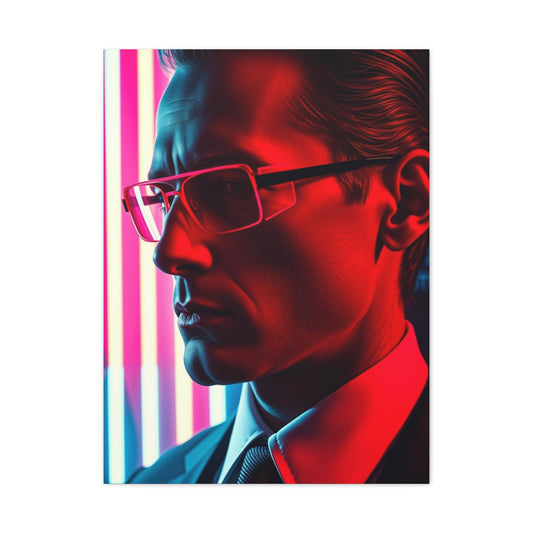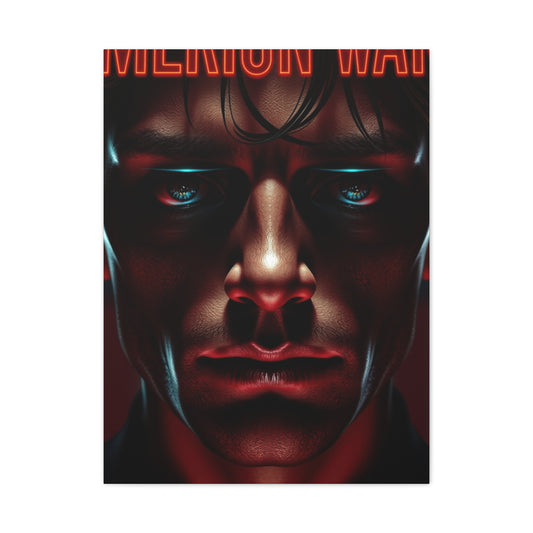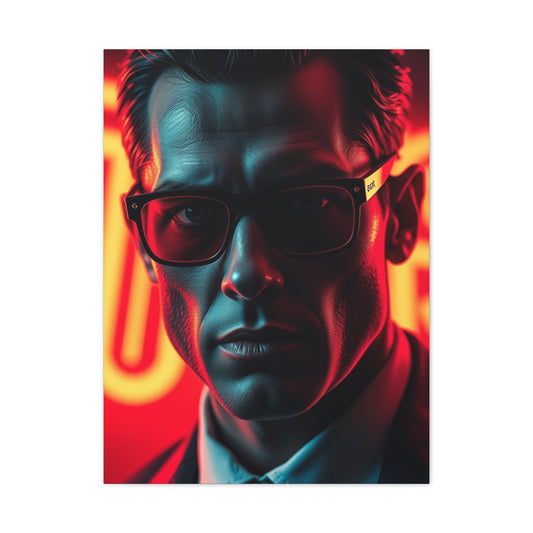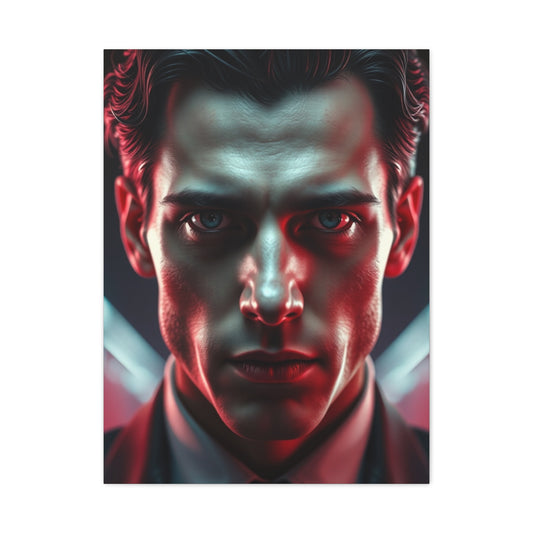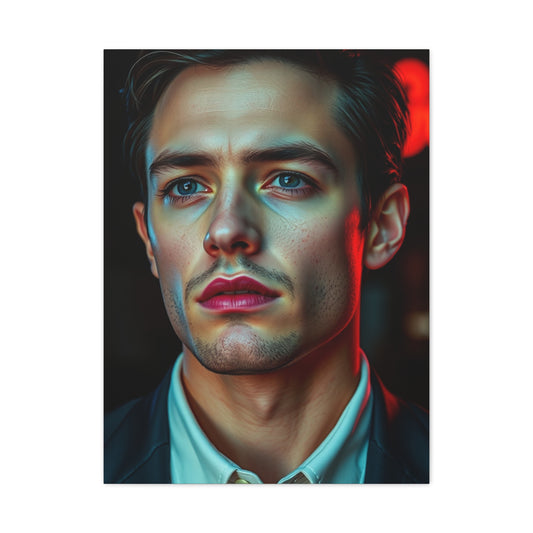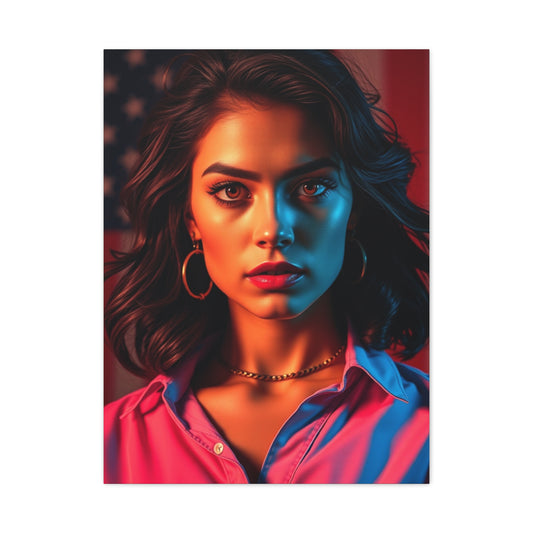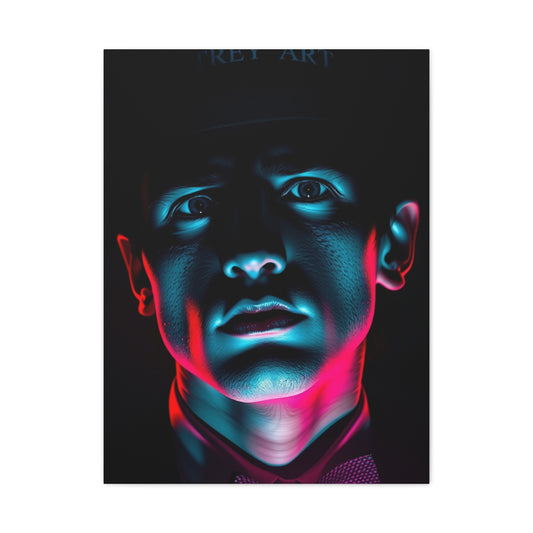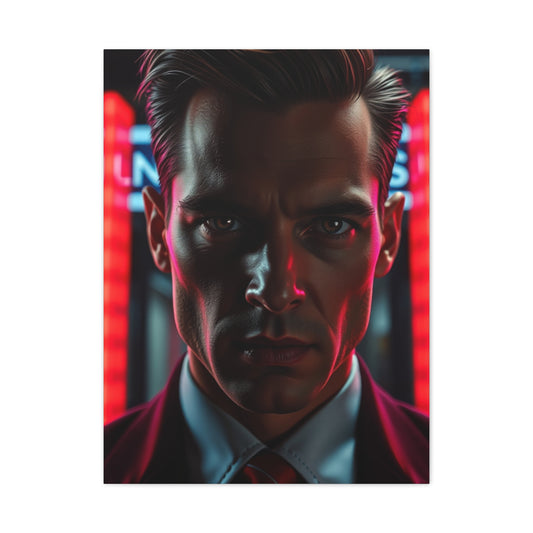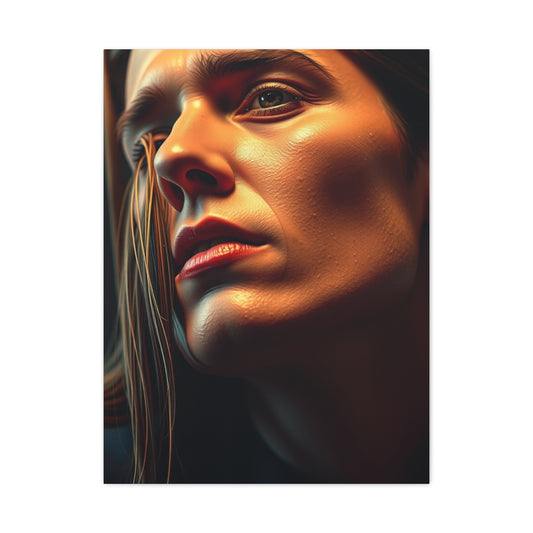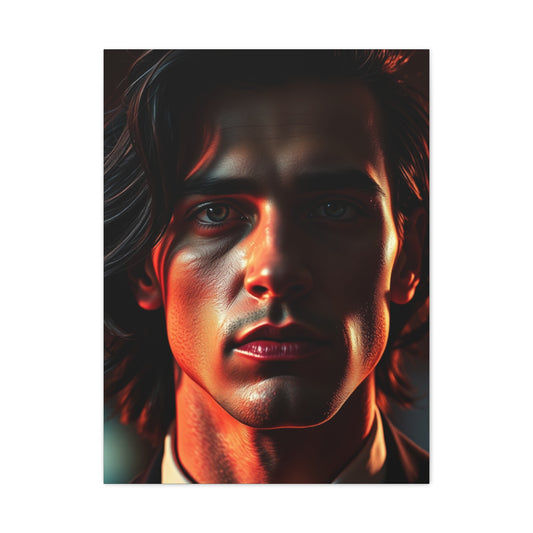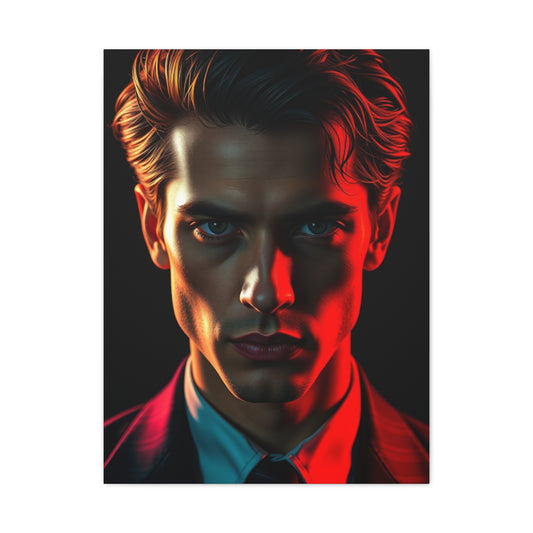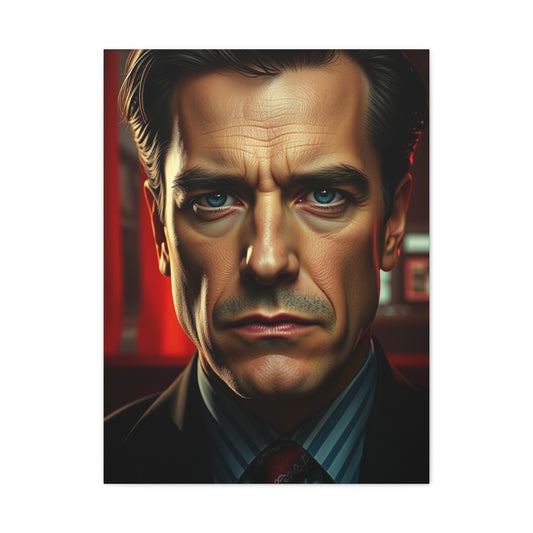Why American Psycho Wall Art Is a Bold Choice for Interiors
The convergence of cinema and interior design has revolutionized how we conceptualize our living environments, creating unprecedented opportunities for personal expression through carefully curated visual narratives. This comprehensive exploration delves into the intricate world of movie-inspired decor, with particular emphasis on the distinctive aesthetic appeal of American Psycho prints and their transformative potential within contemporary residential settings.
Modern homeowners increasingly seek authentic methods to infuse personality into their dwellings, moving beyond conventional decorative approaches toward more sophisticated, culturally resonant design philosophies. The incorporation of cinematic artwork represents a particularly compelling avenue for achieving this objective, offering both aesthetic enhancement and meaningful personal connection to beloved cultural touchstones.
Prints for Discerning Enthusiasts
The process of choosing appropriate cinematic artwork demands careful consideration of multiple interconnected factors that collectively determine the success of your decorative endeavor. Quality enthusiasts must evaluate not merely the immediate visual appeal of potential pieces, but also their long-term compatibility with evolving interior design trends and personal aesthetic preferences.
Contemporary print selection methodologies emphasize the importance of understanding color palettes, compositional elements, and thematic resonance within existing spatial frameworks. American Psycho prints, for instance, offer remarkable versatility through their sophisticated monochromatic schemes and minimalist design sensibilities, making them particularly suitable for modern residential applications.
When evaluating potential acquisitions, discerning collectors should prioritize pieces that demonstrate exceptional production values, including high-resolution imagery, premium substrate materials, and professional printing techniques. The distinction between mass-produced reproductions and carefully crafted artistic interpretations becomes immediately apparent upon close examination, with superior pieces exhibiting enhanced detail clarity, accurate color reproduction, and superior longevity characteristics.
Authentication represents another crucial consideration, particularly when dealing with limited edition releases or artist-signed variants. Reputable dealers provide comprehensive documentation regarding print runs, production methodologies, and authenticity verification procedures, ensuring purchasers receive genuine articles rather than unauthorized reproductions.
Size considerations play equally important roles in successful print selection processes. Oversized pieces command attention and establish focal points within larger spaces, while smaller formats excel in creating intimate viewing experiences within more confined areas. American Psycho artwork benefits particularly from larger scale presentations, allowing viewers to appreciate subtle details and nuanced design elements that might otherwise remain unnoticed.
The psychological impact of different artistic styles cannot be overlooked when making selection decisions. Minimalist interpretations appeal to individuals seeking subtle cultural references without overwhelming visual complexity, while more elaborate compositions satisfy those desiring bold statement pieces that immediately communicate personal interests and aesthetic sophistication.
Seasonal considerations also influence optimal print selection strategies. Certain cinematic themes align naturally with specific times of year, creating opportunities for rotating displays that maintain visual interest throughout annual cycles. American Psycho prints, with their timeless aesthetic qualities, transcend seasonal limitations while remaining perpetually relevant.
Budget allocation requires strategic planning to maximize aesthetic impact while maintaining financial responsibility. Investment-grade pieces appreciate over time, particularly those created by recognized artists or representing iconic cultural moments, making them potentially profitable long-term acquisitions beyond their immediate decorative value.
Gallery Wall Compositions with Cinematic Inspiration
Gallery wall creation represents one of the most sophisticated approaches to integrating movie-inspired artwork within residential environments, requiring careful attention to compositional balance, thematic coherence, and spatial relationships. Successful implementations transform ordinary wall surfaces into dynamic visual narratives that engage viewers while enhancing overall room aesthetics.
The foundation of exceptional gallery wall design lies in establishing clear organizational principles that guide piece selection and placement decisions. Symmetrical arrangements appeal to individuals preferring structured, orderly presentations, while asymmetrical compositions offer greater creative freedom and dynamic visual interest. American Psycho prints integrate seamlessly into both approaches, providing versatile anchor points around which additional pieces can be arranged.
Color coordination strategies significantly influence gallery wall effectiveness, with monochromatic schemes creating sophisticated, unified presentations while complementary color relationships generate vibrant, energetic displays. The neutral tones prevalent in American Psycho artwork facilitate easy integration with diverse color palettes, allowing for flexible arrangement possibilities without conflicting visual elements.
Spacing calculations require precise measurement and careful planning to achieve professional-quality results. Industry standards suggest maintaining consistent gaps between adjacent pieces, typically ranging from two to four inches depending on overall wall dimensions and piece sizes. Larger installations benefit from slightly increased spacing to prevent visual overcrowding, while more intimate arrangements can accommodate tighter configurations.
Frame selection profoundly impacts gallery wall aesthetics, with coordinated framing materials creating cohesive presentations while mixed frame styles generate eclectic, personalized appearances. Premium framing options include museum-quality matting, archival mounting techniques, and conservation glazing materials that protect artwork while ensuring optimal viewing experiences.
Lighting considerations become particularly crucial for gallery wall success, with properly positioned illumination highlighting artwork details while minimizing glare and reflection issues. Track lighting systems offer exceptional flexibility for highlighting multiple pieces simultaneously, while individual picture lights provide focused illumination for specific works requiring enhanced visibility.
Height placement follows established museum standards, positioning artwork centers approximately 57 to 60 inches above floor level to ensure comfortable viewing angles for most observers. Adjustments may be necessary based on ceiling heights, furniture placement, and specific room configurations, but these guidelines provide reliable starting points for most installations.
The integration of three-dimensional elements adds visual depth and textural interest to gallery wall compositions. Small shelving units, decorative objects, or sculptural pieces create layered presentations that engage multiple senses while providing opportunities for rotating displays based on seasonal preferences or evolving interests.
Documentation through photographs or detailed sketches proves invaluable during planning phases, allowing for virtual experimentation before committing to final arrangements. Digital planning tools enable precise placement calculations while minimizing potential installation errors that could compromise overall aesthetic impact.
Harmonizing Contemporary Interior Aesthetics with Pop Culture Elements
The successful integration of pop culture references within modern interior design requires sophisticated understanding of both contemporary aesthetic principles and cultural significance, creating environments that feel both current and personally meaningful. This delicate balance distinguishes amateur attempts from professionally executed implementations that enhance rather than detract from overall design coherence.
Contemporary design philosophies emphasize clean lines, uncluttered surfaces, and carefully curated object selection, principles that might initially seem incompatible with pop culture elements. However, strategic implementation demonstrates how cinematic artwork, particularly pieces like American Psycho prints, can complement rather than conflict with modern design sensibilities when approached with appropriate sophistication.
Minimalist frameworks provide ideal foundations for incorporating selective pop culture elements, with carefully chosen pieces serving as intentional accent features rather than overwhelming focal points. The stark aesthetic of American Psycho artwork aligns naturally with minimalist principles, offering cultural references without compromising spatial simplicity or visual clarity.
Material coordination ensures seamless integration between contemporary furnishings and pop culture artwork. Modern interiors typically feature materials such as steel, glass, concrete, and natural wood, textures that complement rather than compete with high-quality print presentations. Premium framing materials should reflect these material choices, utilizing metals, woods, or composite materials that echo existing interior elements.
Color palette management becomes essential when combining modern neutrals with potentially vibrant pop culture imagery. Successful implementations often utilize monochromatic or near-monochromatic schemes that allow artwork to provide controlled color accents without disrupting overall aesthetic harmony. American Psycho prints excel in this capacity, offering visual interest through composition and form rather than competing color elements.
Proportion relationships require careful attention to prevent pop culture elements from overwhelming contemporary design frameworks. Large-scale modern furniture pieces can accommodate correspondingly substantial artwork, while more delicate contemporary pieces benefit from smaller, more intimate print selections. Understanding these relationships prevents aesthetic mismatches that compromise design integrity.
Technology integration represents another crucial consideration, with modern homes featuring sophisticated entertainment systems, smart home controls, and digital displays that must coordinate harmoniously with traditional artwork presentations. Thoughtful planning ensures these technological elements enhance rather than detract from cinematic artwork displays.
Lighting design takes on enhanced importance when combining modern architecture with pop culture elements. Contemporary spaces often feature dramatic lighting schemes that can be leveraged to create theatrical presentations for movie-inspired artwork, transforming static displays into dynamic visual experiences that change throughout daily cycles.
The temporal aspect of pop culture requires consideration of longevity versus trendiness when making permanent design decisions. While certain references may fade in cultural relevance, iconic films like American Psycho maintain enduring appeal that justifies substantial design investments. Understanding these distinctions helps ensure decorative choices remain satisfying over extended periods.
Revolutionary Statement Concepts for Living Room Transformation
Living room environments present exceptional opportunities for implementing bold design statements through carefully orchestrated movie-inspired installations that command attention while maintaining functional utility. These primary gathering spaces benefit from thoughtful artwork integration that stimulates conversation while reflecting personal aesthetic preferences and cultural sophistication.
Scale considerations become paramount when developing statement concepts for larger living areas, with oversized installations creating dramatic focal points that anchor entire room compositions. American Psycho prints, when presented in substantial formats, possess the visual impact necessary to transform ordinary seating areas into compelling entertainment environments that celebrate cinematic artistry.
Furniture arrangement strategies must accommodate artwork visibility while maintaining traffic flow and conversational groupings. Strategic placement ensures prime viewing angles from multiple seating positions, allowing guests to appreciate artistic details regardless of their chosen location within the space. This requires careful measurement and planning to optimize both aesthetic and functional outcomes.
Color psychology influences statement design effectiveness, with certain hues promoting relaxation while others stimulate energy and engagement. Movie-inspired artwork often incorporates specific color schemes that evoke particular emotional responses, making color coordination with existing furnishings essential for achieving desired atmospheric effects.
Textural contrast adds dimensional interest to statement installations, combining smooth print surfaces with varied fabric textures, natural materials, and metallic accents. These relationships create visually rich environments that engage multiple senses while preventing monotonous presentations that fail to sustain long-term interest.
Seasonal adaptability ensures statement designs remain fresh and engaging throughout annual cycles. Modular approaches allow for element rotation or replacement without requiring complete redesign, maintaining investment value while accommodating changing preferences or emerging cultural interests.
The incorporation of complementary decorative elements amplifies statement impact through carefully coordinated supporting pieces. Sculptural objects, specialized lighting fixtures, and premium textiles can enhance movie-inspired themes without overwhelming primary artwork presentations.
Privacy considerations influence statement design choices, particularly in homes frequently hosting social gatherings. While bold presentations create memorable impressions, homeowners must ensure their selections align with personal comfort levels and anticipated guest reactions to avoid potential social complications.
Investment protection strategies preserve statement piece value through appropriate environmental controls, security measures, and insurance coverage. Premium artwork deserves corresponding protection measures that safeguard against damage, theft, or deterioration while maintaining accessibility for regular enjoyment.
Storage solutions for rotating collections enable statement design flexibility without requiring permanent commitment to specific pieces. Climate-controlled storage areas preserve artwork condition while allowing for periodic refreshment of displayed selections based on evolving preferences or seasonal considerations.
Crafting Immersive Bedroom Environments for Cinema Devotees
Bedroom spaces offer unique opportunities for creating deeply personal movie-inspired environments that reflect individual passions while maintaining the tranquil atmospheres essential for quality rest and relaxation. The intimate nature of these private retreats allows for more adventurous design choices that might prove overwhelming in shared living areas.
Privacy advantages enable bolder artistic expression within bedroom environments, where homeowners can fully embrace specific cinematic aesthetics without concern for broader social acceptance. American Psycho artwork finds particular resonance in these contexts, where its psychological complexity and artistic sophistication can be appreciated without external judgment or explanation.
Scale relationships differ significantly in bedroom applications, with more intimate proportions requiring careful consideration of artwork sizing to prevent overwhelming smaller spatial footprints. Strategic placement above headboards, on accent walls, or within dedicated viewing areas creates focal points that enhance rather than dominate bedroom atmospheres.
Lighting design assumes critical importance in bedroom implementations, where harsh illumination can disrupt sleep patterns while insufficient lighting prevents proper artwork appreciation. Dimmer controls, accent lighting, and natural light management systems enable optimal viewing conditions while maintaining atmospheric flexibility for different daily activities.
Color coordination with bedding, window treatments, and furniture selections requires sophisticated understanding of how various elements interact within confined spaces. Movie-inspired artwork often dictates palette choices, with surrounding elements selected to complement rather than compete with primary artistic statements.
Storage integration addresses practical requirements while maintaining aesthetic integrity. Custom solutions can incorporate artwork display areas alongside functional storage elements, maximizing space efficiency while ensuring proper presentation of treasured pieces.
Climate control considerations protect valuable artwork from humidity fluctuations and temperature extremes that commonly occur in bedroom environments. Proper ventilation, humidity monitoring, and temperature regulation preserve print quality while ensuring comfortable sleeping conditions.
The psychological impact of selected imagery becomes particularly relevant in bedroom applications, where daily exposure to specific visual elements can influence mood, sleep quality, and overall well-being. Careful selection ensures chosen pieces promote positive psychological states while avoiding potentially disturbing or overstimulating content.
Flexibility requirements accommodate changing preferences and life circumstances that may necessitate design modifications over time. Modular approaches enable evolution without requiring complete redecoration, protecting investments while allowing for personal growth and changing interests.
Sound consideration addresses how artwork placement might interact with acoustic properties, particularly in rooms featuring entertainment systems or requiring noise isolation. Strategic placement can enhance acoustic performance while ensuring optimal viewing experiences from primary seating areas.
Accessing Budget-Conscious American Psycho Artwork Solutions
Financial accessibility need not compromise aesthetic quality when pursuing American Psycho-inspired interior design, with numerous strategies available for obtaining premium artwork without exceeding reasonable budget limitations. Understanding market dynamics and alternative acquisition methods enables enthusiasts to build impressive collections while maintaining fiscal responsibility.
Print-on-demand services have revolutionized affordable artwork acquisition, offering high-quality reproductions of popular designs at fraction of traditional gallery pricing. These platforms frequently feature American Psycho interpretations created by independent artists, providing unique perspectives while supporting emerging creative talent through direct purchase relationships.
Digital marketplaces expand selection possibilities exponentially, connecting buyers with international artists and vendors offering competitive pricing structures. Careful research reveals numerous sources for American Psycho artwork ranging from minimal reproductions to elaborate artistic interpretations, accommodating diverse budget ranges and aesthetic preferences.
Seasonal sales events provide exceptional opportunities for acquiring premium pieces at substantially reduced prices. Holiday promotions, end-of-year clearances, and artist studio sales often feature significant discounts on high-quality prints that would otherwise exceed budget constraints.
Commission arrangements with emerging artists enable completely customized artwork creation at reasonable costs. Many talented illustrators and designers accept commission projects for American Psycho-inspired pieces, delivering unique creations tailored to specific requirements while remaining within affordable price ranges.
Group purchasing initiatives leverage collective buying power to achieve wholesale pricing on premium artwork. Organizing purchases with friends, family members, or online communities can unlock substantial savings while building shared collections of complementary pieces.
Frame recycling and refurbishment strategies dramatically reduce overall project costs while maintaining professional presentation standards. Thrift stores, estate sales, and online marketplaces often feature high-quality frames requiring minimal restoration to achieve museum-worthy appearances at minimal expense.
DIY mounting and matting techniques enable professional-quality presentations without expensive framing service fees. Learning basic framing skills proves cost-effective for enthusiasts planning multiple installations while ensuring complete control over aesthetic outcomes.
Subscription services offer predictable monthly costs while providing regular access to new artwork selections. Several platforms specialize in pop culture and movie-inspired prints, delivering curated selections that expand collections gradually while spreading costs across extended timeframes.
Student and educator discounts significantly reduce artwork acquisition costs for eligible individuals. Many print services and online retailers offer substantial discounts for students and educational professionals, making premium pieces more accessible to younger enthusiasts building initial collections.
Loyalty programs and referral systems provide ongoing savings opportunities for repeat customers. Establishing relationships with preferred vendors often results in exclusive access to sales events, early release notifications, and cumulative discount benefits that compound over time.
Evaluating Framed Versus Canvas Presentation Methods
The choice between framed prints and canvas presentations significantly influences both aesthetic outcomes and practical considerations, with each approach offering distinct advantages that align with different interior design objectives and personal preferences. Understanding these differences enables informed decision-making that optimizes both visual impact and long-term satisfaction.
Framed presentations provide classical elegance and sophisticated protection for artwork, with premium framing materials enhancing perceived value while safeguarding against environmental damage. Museum-quality matting creates visual separation between artwork and frame elements, preventing direct contact while adding dimensional depth that enhances viewing experiences.
Glass selection impacts both protection and presentation quality, with options ranging from standard glazing to specialized museum glass featuring anti-reflective coatings and ultraviolet filtering capabilities. Premium glazing options virtually eliminate reflection issues while providing superior protection against fading and environmental contamination.
Frame material choices influence overall aesthetic integration and durability characteristics. Traditional wood frames offer warmth and natural texture that complements organic interior elements, while metal frames provide contemporary sophistication that aligns with modern design sensibilities. American Psycho artwork particularly benefits from sleek metal presentations that echo the film's stark aesthetic qualities.
Canvas presentations eliminate glazing barriers while creating textural interest through fabric surface variations. Gallery-wrapped canvas edges enable borderless installations that maximize visual impact while simplifying hanging procedures. However, canvas formats offer reduced protection against environmental factors and may require more frequent maintenance to preserve optimal appearance.
Mounting considerations affect both installation procedures and long-term stability. Framed pieces typically require more robust hanging systems due to increased weight, while canvas presentations often utilize simpler mounting approaches that accommodate easier repositioning when design modifications become necessary.
Cost comparisons reveal significant variations between framing and canvas options, with premium framing typically requiring higher initial investments while offering superior protection and potentially enhanced resale value. Canvas presentations provide more affordable entry points while maintaining professional appearance standards suitable for most residential applications.
Maintenance requirements differ substantially between formats, with framed pieces requiring periodic cleaning of glazing surfaces while canvas presentations need careful dusting and occasional professional restoration services. Understanding these ongoing commitments helps ensure appropriate format selection based on available maintenance resources.
Storage implications become relevant for collectors maintaining rotating displays or seasonal arrangements. Framed pieces require more substantial storage solutions due to glazing fragility, while canvas presentations offer greater storage flexibility through their reduced weight and impact resistance characteristics.
Customization possibilities vary between formats, with framing offering extensive personalization options through mat selection, frame styles, and glazing choices. Canvas presentations provide fewer customization alternatives but enable more straightforward scaling and cropping adjustments during production processes.
Professional installation services may be advisable for valuable framed pieces requiring precise positioning and secure mounting, while canvas installations often accommodate DIY approaches that reduce overall project costs while providing personal satisfaction through hands-on involvement.
Innovative DIY Styling Approaches for Cinematic Artwork
Do-it-yourself styling techniques empower enthusiasts to create personalized movie-inspired displays while developing valuable skills and achieving substantial cost savings compared to professional design services. These approaches encourage creativity while ensuring complete control over aesthetic outcomes and timeline management.
Planning methodologies establish foundations for successful DIY projects through comprehensive measurement, sketch development, and material specification processes. Digital planning tools enable virtual experimentation with different arrangements before committing to permanent installations, minimizing errors while maximizing design optimization.
Tool requirements for professional-quality installations include precision measuring instruments, appropriate hanging hardware, and safety equipment for elevated work. Investment in quality tools pays dividends through improved outcomes and enhanced safety during installation procedures.
Template creation techniques ensure accurate placement of multiple pieces within complex arrangements. Paper templates cut to exact artwork dimensions enable precise positioning verification before creating permanent mounting holes, preventing costly mistakes that could compromise wall integrity or aesthetic balance.
Lighting integration strategies enhance DIY installations through strategic illumination placement that highlights artwork while minimizing installation complexity. Battery-powered LED systems offer flexibility without requiring electrical modifications, while hardwired solutions provide permanent lighting solutions for dedicated display areas.
Matting and mounting techniques enable custom presentations that rival professional framing services while maintaining complete creative control. Learning basic matting calculations and cutting procedures allows for personalized mat colors and proportions that perfectly complement specific pieces and room aesthetics.
Surface preparation ensures optimal adhesion and longevity for various mounting systems. Proper wall cleaning, primer application, and hardware selection based on wall construction materials prevent future failures while maintaining secure installations capable of supporting substantial artwork weights.
Organization systems maintain project efficiency while preventing loss of hardware, templates, or measurement documentation. Dedicated project boxes contain all necessary materials while detailed documentation enables future reference or modification without repeating planning processes.
Quality control procedures verify installation accuracy and stability before considering projects complete. Systematic checking of level positioning, secure mounting, and aesthetic alignment ensures professional-quality results that satisfy both functional and visual requirements.
Troubleshooting strategies address common DIY challenges such as uneven walls, hidden obstacles, or measurement discrepancies. Understanding these potential issues enables proactive solutions that prevent project delays or compromised outcomes.
Safety protocols protect both installers and artwork during DIY procedures. Proper ladder usage, electrical safety awareness, and protective equipment utilization prevent accidents while safeguarding valuable pieces against damage during installation processes.
Seasonal Pop Culture Decorating Strategies
Seasonal decoration rotation provides dynamic visual interest while extending the practical utility of movie-inspired artwork collections through strategic timing and thematic coordination. This approach prevents design stagnation while maximizing investment value through increased utilization of individual pieces.
Spring implementations emphasize renewal and fresh perspectives, with lighter color palettes and optimistic themes complementing natural seasonal transitions. American Psycho artwork can be coordinated with emerging greenery and increased natural lighting to create sophisticated contrasts that celebrate both cultural appreciation and seasonal awareness.
Summer presentations leverage extended daylight hours and increased social activity through bold, energetic displays that enhance entertainment environments. Larger gatherings benefit from statement pieces that stimulate conversation while providing memorable visual experiences for guests unfamiliar with homeowner aesthetic preferences.
Autumn arrangements incorporate warming color schemes and contemplative themes that complement seasonal introspection and preparation for winter months. Movie-inspired artwork featuring appropriate color palettes creates cozy atmospheres that encourage relaxation while maintaining cultural sophistication.
Winter displays utilize dramatic contrasts and intensive lighting schemes to combat reduced natural illumination while creating intimate viewing experiences. American Psycho prints excel in winter presentations through their stark aesthetic qualities that complement seasonal lighting strategies.
Storage solutions preserve off-season pieces while maintaining accessibility for rotation purposes. Climate-controlled environments protect artwork quality while organized cataloging systems enable efficient selection and retrieval when seasonal changes warrant display modifications.
Transitional strategies ease movement between seasonal presentations without creating jarring aesthetic disruptions. Gradual element replacement or modification maintains continuity while acknowledging changing environmental conditions and personal preferences.
Holiday coordination integrates movie-inspired elements with traditional seasonal celebrations without compromising either aesthetic category. Thoughtful planning enables simultaneous celebration of cultural holidays and personal interests through complementary rather than competing decorative approaches.
Budget allocation across seasonal collections requires strategic planning to prevent financial strain while maintaining design quality. Prioritizing versatile pieces that function across multiple seasons maximizes utility while reducing total acquisition costs.
Documentation tracking facilitates effective rotation scheduling while preventing oversight of valuable pieces during storage periods. Detailed inventories include condition assessments, storage locations, and planned usage schedules that optimize collection management.
Community sharing initiatives extend collection diversity through temporary exchanges with other enthusiasts. Organized trading programs enable access to broader artwork selections while building relationships with fellow movie art collectors who share similar interests and aesthetic sensibilities.
Decoding Symbolic Elements Within American Psycho Artistic Interpretations
The rich symbolic vocabulary embedded within American Psycho artwork provides multilayered meaning that extends far beyond surface aesthetic appeal, offering viewers opportunities for deeper engagement with both cinematic source material and broader cultural commentary. Understanding these symbolic elements enhances appreciation while informing selection decisions for specific interior design applications.
Color symbolism plays fundamental roles in American Psycho artistic interpretations, with monochromatic schemes often representing the protagonist's psychological detachment while red accents symbolize violence and passion lurking beneath civilized surfaces. These color relationships create psychological tension that adds depth to viewing experiences while providing conversation opportunities for culturally aware observers.
Typography choices within American Psycho artwork frequently reference corporate aesthetics and consumer culture, utilizing fonts and layout principles borrowed from business environments and marketing materials. These references reinforce thematic connections to materialism and social conformity while creating visual links to contemporary commercial design trends.
Geometric patterns and architectural elements reflect the film's emphasis on structured environments and psychological compartmentalization. Clean lines, precise angles, and mathematical proportions mirror the protagonist's obsessive attention to detail while creating visually appealing compositions that translate effectively to interior design applications.
Material references embedded in artwork imagery often include luxury goods, designer products, and status symbols that comment on consumer culture while providing aspirational aesthetic elements. These references resonate with viewers familiar with luxury lifestyle marketing while offering sophisticated cultural commentary for those understanding deeper implications.
Facial expression interpretation reveals psychological complexity through subtle details that reward careful observation. Artists often emphasize particular emotional states or psychological conditions through exaggerated or stylized facial features that communicate character psychology while maintaining artistic sophistication.
Environmental settings depicted in American Psycho artwork frequently reference specific architectural styles, interior design trends, or urban landscapes that provide contextual meaning while offering inspiration for real-world design applications. These environmental elements can inform broader interior design decisions beyond artwork selection.
Text integration strategies incorporate memorable dialogue, character names, or thematic statements that enhance narrative connections while providing typographic interest. Careful integration ensures text elements complement rather than compete with visual components, maintaining overall design coherence.
Abstract interpretations transform literal cinematic elements into symbolic representations that maintain thematic connections while offering greater aesthetic flexibility. These approaches enable integration with diverse interior design styles while preserving cultural references for informed viewers.
Historical context awareness enriches understanding of symbolic choices by connecting artwork elements to broader cultural movements, artistic traditions, or social commentary present during the film's creation and subsequent cultural evolution.
Personal interpretation opportunities enable individual viewers to discover unique meaning within symbolic elements based on personal experiences, cultural background, and aesthetic preferences. This subjective dimension ensures artwork remains engaging through repeated viewing while providing opportunities for evolving understanding over time.
Curated Gift Concepts for Cinematic Art Enthusiasts
Thoughtful gift selection for movie art collectors requires understanding recipient preferences, existing collection characteristics, and aesthetic sensibilities while identifying pieces that provide meaningful additions to established displays. Successful gift-giving in this specialized market demands research, creativity, and appreciation for both artistic quality and cultural significance.
Recipient assessment begins with careful observation of existing collections, preferred aesthetic styles, and frequently discussed cinematic interests. American Psycho enthusiasts often appreciate artwork that explores psychological themes, minimalist design principles, or cultural commentary, providing guidance for appropriate gift selection within related aesthetic categories.
Budget consideration must balance gift significance with financial responsibility, ensuring chosen pieces represent meaningful investments without creating financial strain. Premium options might include limited edition prints or artist-signed pieces, while budget-conscious alternatives could focus on high-quality reproductions or emerging artist works that offer excellent value propositions.
Presentation enhancement adds substantial perceived value through premium packaging, custom framing, or accompanying documentation that provides context and significance information. Professional presentation suggests careful consideration while educating recipients about artistic or cultural importance of selected pieces.
Personalization opportunities distinguish thoughtful gifts from generic purchases through custom elements such as personal dedications, specific color schemes, or commissioned pieces that reflect recipient interests beyond basic movie appreciation. These touches demonstrate genuine understanding and consideration for individual preferences.
Surprise elements maintain gift excitement while ensuring practical utility. Unexpected artwork discoveries or unique artistic interpretations provide memorable experiences while contributing meaningfully to existing collections without duplicating previously acquired pieces.
Educational components add lasting value through accompanying materials that enhance understanding and appreciation. Artist biographies, cultural context explanations, or styling suggestions provide ongoing utility beyond immediate aesthetic pleasure.
Timing considerations optimize gift impact through coordination with relevant occasions, personal milestones, or cultural events. Movie anniversaries, home renovations, or career achievements provide natural opportunities for movie-inspired artwork gifts that acknowledge multiple significance layers.
Packaging innovation creates memorable unboxing experiences that enhance overall gift satisfaction. Custom packaging that reflects cinematic themes or utilizes premium materials demonstrates additional consideration while protecting valuable contents during transport and storage.
Follow-up opportunities enable ongoing engagement through styling assistance, additional piece recommendations, or related cultural event notifications. Maintaining interest in recipient satisfaction extends gift value while building stronger personal relationships through shared aesthetic appreciation.
Group gifting strategies enable access to premium pieces that might exceed individual budget capabilities while creating shared ownership experiences that enhance social connections. Coordinated efforts can fund substantial statement pieces or complete collection themes that provide lasting satisfaction for recipients.
Reimagining Wall Surfaces with Legendary Cult Cinema
Cult classic films provide extraordinary foundations for transformative wall treatments that celebrate counterculture aesthetics while creating memorable environments that reflect sophisticated cultural awareness. These legendary works offer rich visual vocabularies that translate effectively into compelling interior design statements.
Cult film aesthetics often challenge conventional design principles through bold color choices, unconventional composition strategies, and provocative imagery that demands attention while stimulating conversation. American Psycho exemplifies this approach through its stark visual contrasts and psychological complexity that translate into compelling wall presentations.
Installation strategies for cult classic artwork require careful consideration of viewing angles, lighting conditions, and spatial relationships that optimize impact while maintaining aesthetic harmony. Strategic placement can create shrine-like presentations that celebrate specific films while integrating seamlessly with broader interior design concepts.
Cultural significance adds layers of meaning that extend beyond immediate aesthetic appeal, providing ongoing engagement opportunities for viewers familiar with source materials while offering discovery experiences for those encountering references for the first time. This dual accessibility ensures broad appeal while rewarding deeper cultural knowledge.
Authentication becomes particularly crucial when dealing with cult classic artwork, as popularity often generates extensive reproduction markets featuring varying quality levels. Serious collectors prioritize verified authentic pieces or high-quality authorized reproductions from reputable sources to ensure satisfaction and potential investment value.
Community connection opportunities arise through cult classic artwork displays that identify homeowners as members of specific cultural communities. These visual signals can facilitate social connections with like-minded individuals while providing conversation starters for social gatherings.
Thematic expansion strategies enable comprehensive room transformations through coordinated element selection that reinforces cult classic aesthetics without overwhelming spaces. Subtle references through color choices, furniture selection, or decorative accessories can support primary artwork presentations while maintaining design sophistication.
Historical context appreciation enriches viewer understanding while providing educational opportunities for younger viewers unfamiliar with cult classic significance. Accompanying materials or strategic placement near related cultural artifacts can enhance overall presentation value while encouraging broader cultural exploration.
Evolution tracking acknowledges how cult classic significance changes over time, influencing both aesthetic appreciation and market value considerations. Understanding these trends enables strategic acquisition timing while ensuring selected pieces maintain relevance throughout changing cultural landscapes.
Personal connection development through cult classic artwork creates emotional investment that transcends mere aesthetic appreciation. These deeper relationships ensure long-term satisfaction while justifying significant financial investments in premium pieces or comprehensive collection development.
Regional availability varies significantly for cult classic artwork, with certain pieces experiencing limited distribution or regional popularity differences. Understanding these market dynamics enables strategic acquisition planning while identifying potential appreciation opportunities in undervalued markets.
Conclusion:
The integration of American Psycho wall art into interior design represents a striking and sophisticated approach to personal expression, merging cinematic culture, psychological depth, and modern aesthetics. This type of artwork goes far beyond mere decoration, offering homeowners the ability to transform their spaces into visually compelling environments that reflect individuality, cultural awareness, and refined taste. As explored throughout this article, American Psycho prints can serve multiple roles—from bold statement pieces to subtle accents—depending on scale, placement, and interpretive intent, making them versatile tools for interior storytelling.
One of the most significant advantages of incorporating American Psycho artwork is its capacity to harmonize with contemporary design principles while simultaneously challenging conventional visual expectations. Minimalist interiors, for instance, benefit from the stark monochromatic palettes and precise geometric compositions characteristic of these prints. Their clean lines and restrained color schemes allow homeowners to include pop culture references without disrupting the spatial clarity or sense of order within the room. Conversely, more elaborate or large-scale interpretations function as dramatic focal points in living areas or entertainment spaces, commanding attention while enriching the room’s narrative dimension. By considering scale, proportion, and placement, designers can ensure that these artworks either subtly complement a space or provide visually arresting statements that anchor the entire interior composition.
The symbolic richness of American Psycho art further enhances its transformative potential. These prints often convey complex psychological themes, social commentary, and cultural critique, inviting viewers to engage actively with the work rather than passively observing it. Red accents, for example, evoke tension and passion, while monochromatic tones highlight detachment and control. Typography, architectural motifs, and luxury material references imbue each piece with layers of meaning that resonate with culturally literate audiences. By thoughtfully selecting artworks that align with both personal taste and interior design objectives, homeowners can cultivate spaces that are intellectually stimulating as well as aesthetically compelling.
Practical considerations also play a crucial role in successfully integrating American Psycho wall art. Budget-conscious buyers can leverage print-on-demand platforms, digital marketplaces, seasonal sales, and emerging artist commissions to access high-quality pieces without compromising style or quality. DIY installation strategies, including careful matting, framing, and lighting techniques, provide further control over presentation while reducing reliance on professional services. Attention to spatial relationships, furniture arrangement, and lighting ensures that each piece maximizes both visibility and impact, whether it is a centerpiece above a sofa, an accent in a bedroom, or a component of a larger gallery wall.
Seasonal rotation and flexible curation strategies further increase the utility and longevity of cinematic artwork. Prints can be repositioned or swapped to correspond with seasonal color schemes, lighting conditions, or evolving personal tastes, maintaining freshness and engagement over time. Additionally, American Psycho artwork often functions as a cultural conversation starter, signaling an owner’s appreciation for film, design, and storytelling, while fostering connections with guests who share similar aesthetic or intellectual interests.
Ultimately, American Psycho wall art exemplifies the intersection of culture, psychology, and design, offering homeowners a rare opportunity to create spaces that are simultaneously sophisticated, provocative, and highly personalized. Whether utilized as a striking statement piece, a subtle accent, or a component of an evolving gallery wall, these prints provide enduring aesthetic and cultural value, transforming ordinary walls into immersive narratives that communicate personality, taste, and awareness of broader artistic contexts. By carefully considering scale, symbolism, placement, and integration with contemporary furnishings, homeowners can ensure that American Psycho artwork transcends decorative function to become a defining feature of their interior environment. Its versatility, depth, and visual impact affirm why it remains a bold, compelling, and enduring choice for modern interior design.

